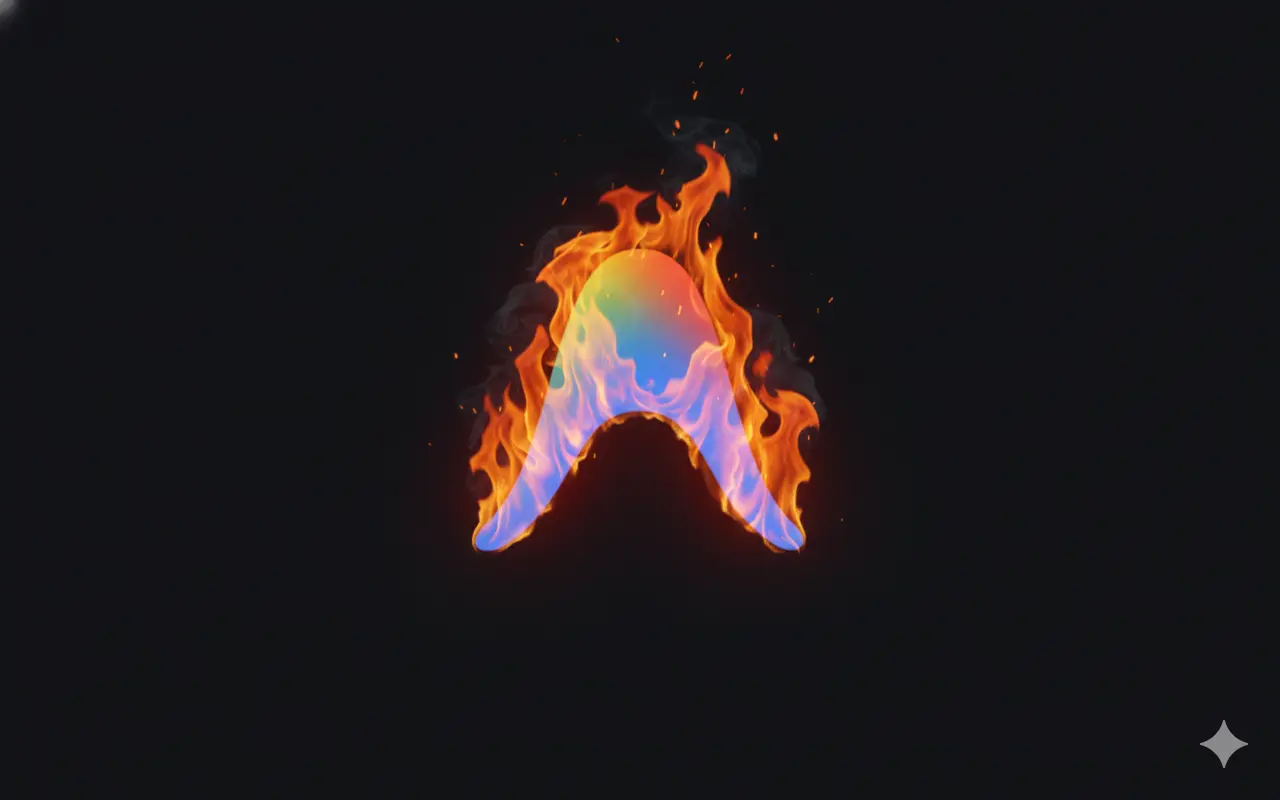The AI community’s obsession with auto-regressive models is officially showing cracks. For years, we’ve accepted token-by-token generation as the only game in town, patient scribes writing manuscripts one word at a time. LLaDA2.0-flash (103B) and LLaDA2.0-mini (16B) just threw that paradigm out the window with their Mixture-of-Experts-powered diffusion language modeling.
What Exactly Are You Deploying?
Let’s cut through the hype: these aren’t your typical transformer models. LLaDA2.0-flash packs a 100BA6B MoE architecture, that’s 100 billion total parameters with only 6.1 billion activated during inference. The smaller LLaDA2.0-mini follows suit with 16BA1B (16B total, 1.4B active). Both leverage diffusion modeling, which means they reconstruct text by iteratively denoising corrupted sequences rather than predicting one token after another.
This architectural shift has immediate practical implications. As discussions on developer forums note, the inference patterns are fundamentally different from traditional transformers. You’re dealing with parallel token generation, different compute/bandwidth trade-offs, and novel cache behaviors.
The Performance Reality Check
The official benchmarks tell a compelling story. LLaDA2.0-flash posts an impressive 94.51 on HumanEval and 96.06 on GSM8K, putting it firmly in competitive territory with models like Qwen3-30B-A3B-Instruct-2507 while activating significantly fewer parameters during inference. The efficiency claims are substantial: “With 100 billion total parameters, only 6.1 billion are activated during inference”, according to the official model documentation.
But the early community testing reveals some interesting wrinkles. As one developer noted on Reddit: “I switched to u/Finanzamt_Endgegner’s PR, downloaded the 16BA1B MoE, quantized it and ran llama-bench.” Their benchmarks showed promising speed, but also highlighted that “the diffusion steps might get calculated differently.”
The llama.cpp Integration Race
The real story here isn’t just the models, it’s the community sprint to make them usable. The ongoing llama.cpp pull request (#17454) shows developers wrestling with making diffusion models work efficiently in local deployment environments.
What makes this integration non-trivial? As contributors discovered, diffusion models have “very different compute/register usage patterns” and lose “token-wise KV cache which eliminates a lot of existing speedup architecture.” But the performance optimizations are coming fast. One developer reported achieving “time per step: 19.47ms → 4.28ms in a 700 token generation” through KV cache simplifications.
Here’s how you’d run the model today:
import torch
import torch.nn.functional as F
from transformers import AutoModelForCausalLM
from transformers import AutoTokenizer
model_path = "/path/to/LLaDA2.0-mini-preview"
device = "auto"
model = AutoModelForCausalLM.from_pretrained(
model_path, trust_remote_code=True, device_map=device
)
model = model.to(torch.bfloat16)
model.eval()
tokenizer = AutoTokenizer.from_pretrained(model_path, trust_remote_code=True)
prompt = "Why does Camus think that Sisyphus is happy?"
input_ids = tokenizer.apply_chat_template(
[{"role": "user", "content": prompt}],
add_generation_prompt=True,
tokenize=True,
return_tensors="pt",
)
generated_tokens = model.generate(
inputs=input_ids,
eos_early_stop=True,
gen_length=512,
block_length=32,
steps=32,
temperature=0.0,
)
generated_answer = tokenizer.decode(
generated_tokens[0],
skip_special_tokens=True,
)
print(generated_answer)
The recommended settings are specific and crucial: temperature=0.0, block_length=32, and steps=32 for optimal performance.
Why Diffusion Changes Everything for Reasoning
Recent research into diffusion language models reveals why this architectural shift matters. The paper “Reasoning in Diffusion Large Language Models is Concentrated in Dynamic Confusion Zones” shows that “reasoning in diffusion language models is concentrated in a few dynamic confusion zones.” Unlike autoregressive models that process sequentially, diffusion models exhibit transient spikes in uncertainty and instability that strongly predict final success or failure.
This means they “think” differently, approaching problems holistically rather than linearly. As analysis from Banandre notes, “tuning diffusion steps lets the model generate roughly two tokens at once, demonstrating genuine parallel generation potential.” The bidirectional thinking capability allows models to “reconsider earlier decisions based on later context”, leading to stronger long-range reasoning and fewer cascading errors.
The MoE Efficiency Play
The Mixture-of-Experts component is equally critical. As empirical comparisons show, MoE architectures like Qwen3-30B-A3B demonstrate “higher variance and sharper sensitivity to optimization choices” compared to dense models, but offer significantly better parameter efficiency. For local deployment, this efficiency translates directly to viable deployment scenarios that would be impossible with dense models of similar capability.
However, MoE architectures come with routing overhead and more complex inference patterns. As one developer noted, “Diffusion MoEs are a bit cursed in general because their Attention mechanism is compute bound due to not KV caching”, creating “a really weird compute/bandwidth tradeoff.”
Practical Deployment: Early Realities
The community testing reveals both promise and challenges. Early llama.cpp implementations show the 16B model running “faster than GPT-OSS-20B” on some benchmarks, but with the caveat that “actual quality? Haven’t fully tested it yet as I’m playing around with CLI flags.”
The developer experience is rapidly evolving. The dLLM framework provides “structured, reproducible pipelines for training and evaluating diffusion LMs without writing any scaffolding”, making this architecture more accessible to practitioners.
But there are real questions about where these models fit. Some community members question whether LLaDA2.0-flash makes sense when “it has more active params than qwen-30B-A3B” and comparable performance. The answer might lie in the unique reasoning patterns that diffusion enables rather than raw benchmark numbers.
The Local AI Implications
This development matters because it represents architectural diversification at the local level. Most local AI deployments have been limited to scaled-down versions of autoregressive architectures. Diffusion models bring different trade-offs: potentially better reasoning coherence at the cost of different computational patterns and memory usage.
The computational overhead remains substantial compared to traditional approaches, but optimizations are progressing rapidly. Frameworks like Sparse-dLLM achieve “up to 10× higher throughput than vanilla dLLMs” according to research, suggesting this architecture has legs for practical deployment.
For developers working with llama.cpp integration, the key insight is that these models require specialized handling, different cache strategies, step calculations, and optimization approaches compared to traditional transformer models.
Where This Goes Next
The immediate roadmap is telling. The developers plan “supercharged reasoning with LLaDA 2.0” through reinforcement learning fine-tuning and continued framework development. The open-sourcing of the dFactory framework suggests this isn’t a one-off experiment but a sustained architectural bet.
For local AI practitioners, the emergence of viable diffusion models means we now have architectural choices rather than a monoculture. Different tasks might benefit from different generation paradigms, autoregressive for streaming applications, diffusion for complex reasoning tasks requiring global coherence.
The real test will be whether developers find these models genuinely useful versus theoretically interesting. Early performance numbers suggest they’re competitive, but the proof will be in production deployments. As one skeptical community member put it: “I don’t believe this model outpaces qwen3 8b, and probably does not come near Qwen3 4B 2507. But I’ll admit being wrong if I am wrong.”
For now, LLaDA2.0 represents the most mature attempt to bring diffusion language modeling to practical local deployment. Whether it becomes a mainstay or a footnote depends on whether the architectural advantages outweigh the implementation complexity, and whether the community can build the tooling to make those advantages accessible to everyday developers.




